
Another Rare Winter Visitor, the Baltimore Oriole
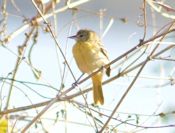
In mid-December 2016, FODMers spotted a Baltimore oriole (Icterus galbula) in Dyke Marsh, a rare winter sighting in Northern Virginia. These birds typically migrate to Mexico, Central America and Cuba during the winter months and are likely vagrants here that have either failed to migrate or have stopped short of their final migration destination.
Restoring, Sustaining Productive Ecosystems
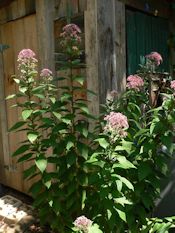
We can bring back functional ecosystems, Dr. Doug Tallamy explains in “Hometown Habitat,” a film that FODM featured at the November 16, 2016, meeting. He describes the effort as “healing the Earth, one yard at a time.” Dr. Tallamy is Professor and Chair of Entomology and Wildlife Ecology at the University of Delaware and the author of Bringing Nature Home.
A Multi-sensory Walk in Dyke Marsh
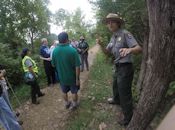
FODMers Jessie Strother and Ned Stone helped National Park Service staff lead a multi-sensory nature walk for low-vision and blind people in Dyke Marsh on September 24, 2016. The group was led by Park Ranger Rachel LeQuire ( photo, by Mary Bielamowicz). As the group of 15 walked along the Haul Road trail, they felt tree bark, snake skins and animal pelts.
FODMers Learn about Plants from an Expert
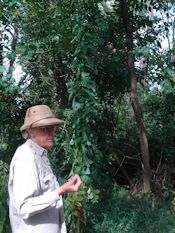
On Saturday morning, September 3, 2016, as Hurricane Hermine pounded Virginia’s coast, 25 FODMers studied the plants of Dyke Marsh on a windy, “rainless,” three-hour walk. “At least there’ll be fewer mosquitoes,” quipped walk leader Dr. Elizabeth Wells, Associate Professor Emerita of Botany at the George Washington University. Her commentary was engaging and wide ranging, covering plant taxonomy, reproduction, structure, pollination, predation, host plants and more.
STEM Students Visit Dyke Marsh
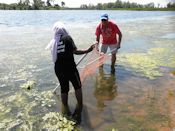
On July 14, 2016, FODM hosted 25 George Washington Middle School students participating in the Alexandria Public Schools’ summer STEM (science, technology, engineering and mathematics) program and two of their teachers. The students learned about the natural resources of Dyke Marsh and conducted some water testing using seine nets.
Snake Sightings
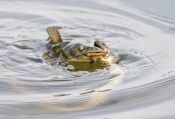
Two species of snake are often seen in Dyke Marsh in the summer.
On July 1, 2016, during a canoe trip in the southern part of Dyke Marsh, FODMers saw an encounter between a common water snake (Nerodia sipedon sipedon) and a catfish. Also called the northern water snake, it is probably the most abundant snake in Dyke Marsh.
These photos (by Ed Eder) indicate how the prey was snared in deeper water and dragged to the shore by a very determined snake.
FODMers Help With National BioBlitz

During the May 20 and 21, 2016, national BioBlitz, FODMers, National Park Service (NPS) staff and friends identified 13 new spider species in the Dyke Marsh-Belle Haven Park area. Other records for Dyke Marsh: the first spring record for a Philadelphia vireo (Vireo philadelphicus); the second record for the hoary bat (Lasiurus cinereus); one new earthworm (Bimastos palustris), a native species; and two new terrestrial isopods (Porcellio laevis, Trichoniscus pusillus). At our “sister” park, Theodore Roosevelt Island, people found 17 new lichens.
Spring Brings Breeding Skinks
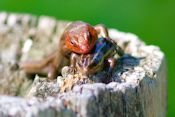
Spring is breeding time in Dyke Marsh for many species of wildlife, including skinks. The American five-lined skink, (Plestiodon fasciatus), is one of the most commonly seen lizards in eastern North America and is frequently observed around logs along the Haul Road Trail (photo, skinks mating May 2016 by Ed Eder).
The Interdependence of Natural Resources
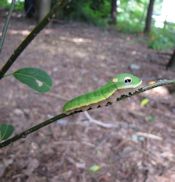
At the quarterly meeting of FODMers and friends on May 11, 2016, Alan Ford and Laura Beaty gave a presentation on the interrelationships of plants and animals and the important role of pollinators and leaf-eaters. Alan is president of the Potowmack Chapter of the Virginia Native Plant Society and Laura chairs the Propagation Committee.
Ospreys Are Resourceful, but Fishing Line Is a Danger
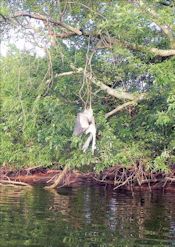
Every spring, FODMers welcome the spring return of the ospreys (Pandion haliaetus) to Dyke Marsh and the Potomac River shoreline where these magnificent raptors build and refurbish their nests and raise their young. In recent years, there have been approximately 10 to 12 active osprey nests within FODM’s breeding bird survey tract, a three-mile area that extends from the Porto Vecchio condominiums near Hunting Creek to south of Morningside Lane.
Despite the rebound in the osprey population, threats still exist.
T.C. Williams Students Visit Dyke Marsh
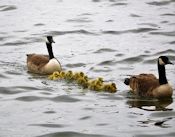
On the morning of April 29, 2016, 24 students and three teachers from Alexandria’s T.C. Williams High School’s International Academy visited Dyke Marsh to observe in action some of the lessons of their biology class and to try their hand at suppression of invasive plants.
Lepidoptera and Odonata Surveys Underway
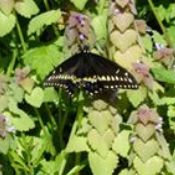
Volunteers began lepidoptera and odonata surveys in Dyke Marsh on April 20, 2016, led by Jim Waggener. On the 20th, surveyors identified five butterfly species in a brief span. The peak time for surveys is May through September. This work helps identify and save critical habitat that preserves biodiversity in our region.


AlbertHerring-b4cc6b5cfb.jpg)



 Friends of Dyke Marsh, Inc. is a non-profit 501(c)(3) organization.
Friends of Dyke Marsh, Inc. is a non-profit 501(c)(3) organization.